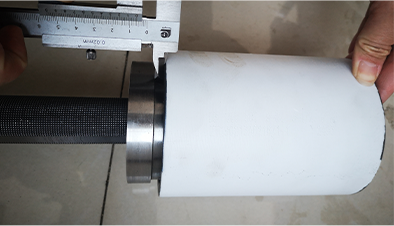- Afrikaans
- Albanian
- Amharic
- Arabic
- Armenian
- Azerbaijani
- Basque
- Belarusian
- Bengali
- Bosnian
- Bulgarian
- Catalan
- Cebuano
- Corsican
- Croatian
- Czech
- Danish
- Dutch
- English
- Esperanto
- Estonian
- Finnish
- French
- Frisian
- Galician
- Georgian
- German
- Greek
- Gujarati
- Haitian Creole
- hausa
- hawaiian
- Hebrew
- Hindi
- Miao
- Hungarian
- Icelandic
- igbo
- Indonesian
- irish
- Italian
- Japanese
- Javanese
- Kannada
- kazakh
- Khmer
- Rwandese
- Korean
- Kurdish
- Kyrgyz
- Lao
- Latin
- Latvian
- Lithuanian
- Luxembourgish
- Macedonian
- Malgashi
- Malay
- Malayalam
- Maltese
- Maori
- Marathi
- Mongolian
- Myanmar
- Nepali
- Norwegian
- Norwegian
- Occitan
- Pashto
- Persian
- Polish
- Portuguese
- Punjabi
- Romanian
- Russian
- Samoan
- Scottish Gaelic
- Serbian
- Sesotho
- Shona
- Sindhi
- Sinhala
- Slovak
- Slovenian
- Somali
- Spanish
- Sundanese
- Swahili
- Swedish
- Tagalog
- Tajik
- Tamil
- Tatar
- Telugu
- Thai
- Turkish
- Turkmen
- Ukrainian
- Urdu
- Uighur
- Uzbek
- Vietnamese
- Welsh
- Bantu
- Yiddish
- Yoruba
- Zulu
petroleum tubing coupling
Understanding Petroleum Tubing Couplings Essential Components in Oil and Gas Industry
In the oil and gas industry, the efficient transportation of extracted fluids is crucial for operational success. One of the fundamental components involved in this process is petroleum tubing couplings. These couplings play a vital role by connecting individual sections of tubing together, ensuring a secure and leak-proof joint that can withstand high pressures and corrosive environments. This article delves into the significance, types, and selection criteria of petroleum tubing couplings.
What are Petroleum Tubing Couplings?
Petroleum tubing couplings are specialized fittings used to connect two lengths of tubing used in oil and gas production. These couplings are designed to ensure that the joint between the two tubing sections maintains a high integrity under the various pressures and temperatures encountered during extraction and transportation processes. They are typically made from steel or other durable materials that can endure extreme conditions, including high-pressure environments and exposure to corrosive substances.
Types of Petroleum Tubing Couplings
There are several types of petroleum tubing couplings, each designed to meet specific operational requirements
. The most common types include1. Standard Couplings These are the most widely used couplings in the industry, manufactured to standard dimensions that allow for easy assembly and disassembly. They are designed to accommodate a range of tubing sizes and pressure ratings.
2. Long Couplings Longer than standard couplings, these are used when additional stability and strength are needed. Long couplings help reduce the likelihood of bending or buckling under high-pressure conditions.
3. Specialty Couplings These couplings are engineered for specific applications, such as extreme temperatures, corrosive environments, or high-pressure scenarios. They may include additional features like seals or gaskets to enhance performance.
4. API Specified Couplings Those certified by the American Petroleum Institute (API) comply with rigorous industry standards. These couplings undergo stringent testing to ensure they can perform under specified conditions.
petroleum tubing coupling

Factors to Consider When Selecting Petroleum Tubing Couplings
Choosing the appropriate petroleum tubing couplings is critical for maintaining the efficiency and safety of oil and gas operations. Several factors should be taken into account
1. Material Compatibility The coupling material must be compatible with the type of fluid being transported. Factors such as corrosion resistance and the ability to withstand high pressures are essential considerations.
2. Pressure Ratings Every coupling comes with a specified pressure rating. It’s crucial to select couplings that can handle the maximum pressure anticipated in the application to prevent failures that could lead to costly leaks and downtime.
3. Temperature Range Couplings should be chosen based on the temperature range of the operation. High-temperature environments may require specialized materials that can maintain structural integrity without deforming or degrading.
4. Size and Compatibility Couplings must match the outer diameter of the tubing they connect. Careful measurement and adherence to standard sizing are vital to ensure a secure fit and optimal sealing.
5. Regulatory Compliance Ensure that selected couplings meet all relevant industry standards and regulations, such as those set by the API, to minimize the risk of operational disruptions and enhance safety.
Conclusion
In summary, petroleum tubing couplings are essential components in the oil and gas industry, providing the necessary connections to facilitate the safe and efficient transport of fluids. With various types available and several critical factors to consider in their selection, it is imperative that industry professionals carefully evaluate their coupling needs to ensure optimal performance and safety. As technology and materials science advance, we can expect even more innovative and reliable coupling solutions to emerge, further enhancing the operational efficiency of oil and gas extraction and transportation processes.
-
Tubing Pup Joints: Essential Components for Oil and Gas OperationsNewsJul.10,2025
-
Pup Joints: Essential Components for Reliable Drilling OperationsNewsJul.10,2025
-
Pipe Couplings: Connecting Your World EfficientlyNewsJul.10,2025
-
Mastering Oilfield Operations with Quality Tubing and CasingNewsJul.10,2025
-
High-Quality Casing Couplings for Every NeedNewsJul.10,2025
-
Boost Your Drilling Efficiency with Premium Crossover Tools & Seating NipplesNewsJul.10,2025







